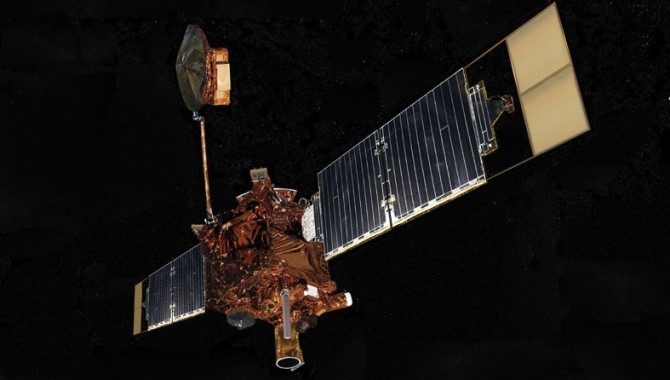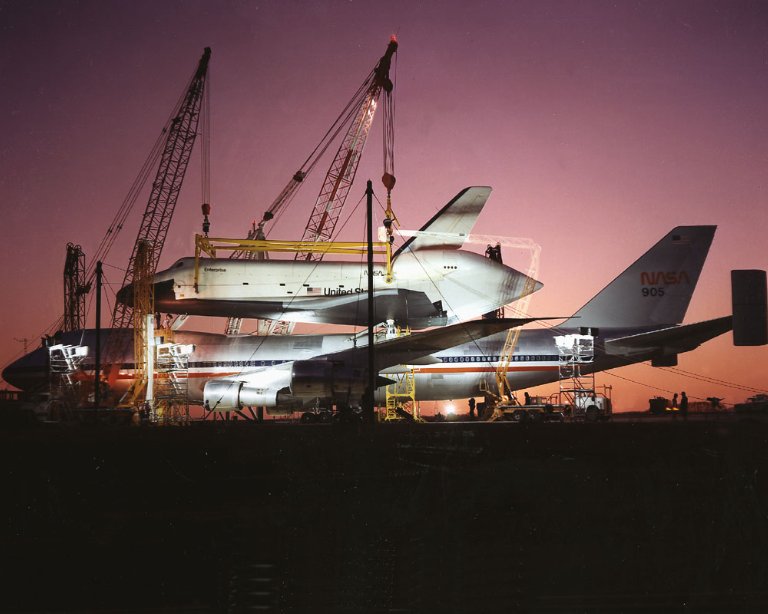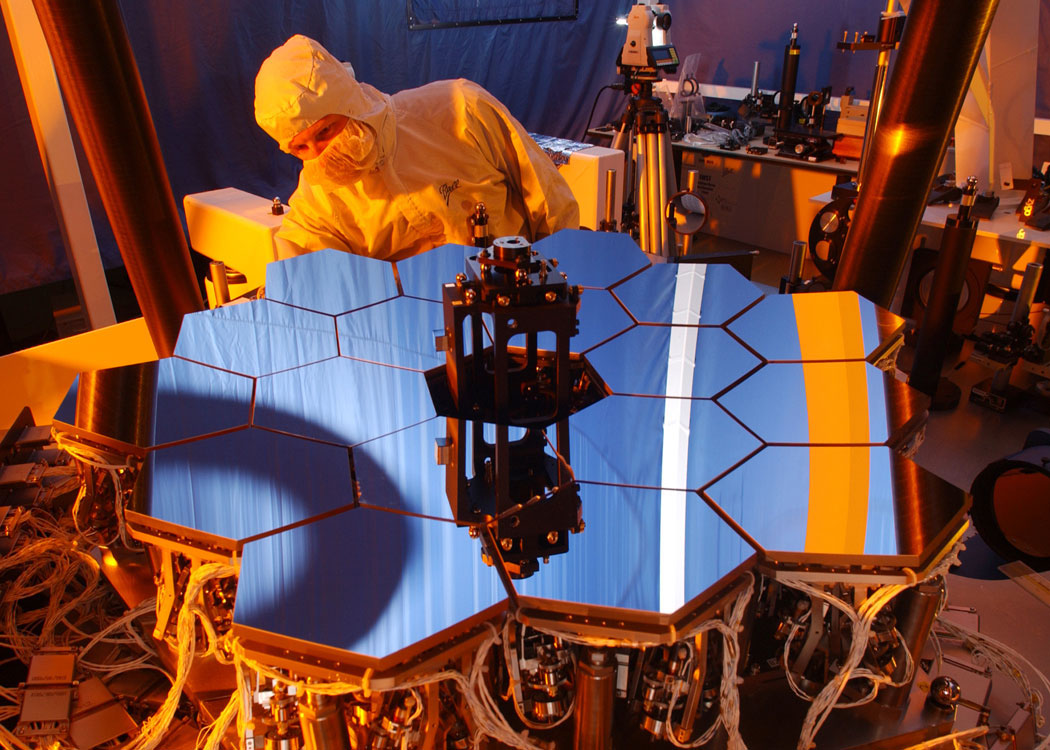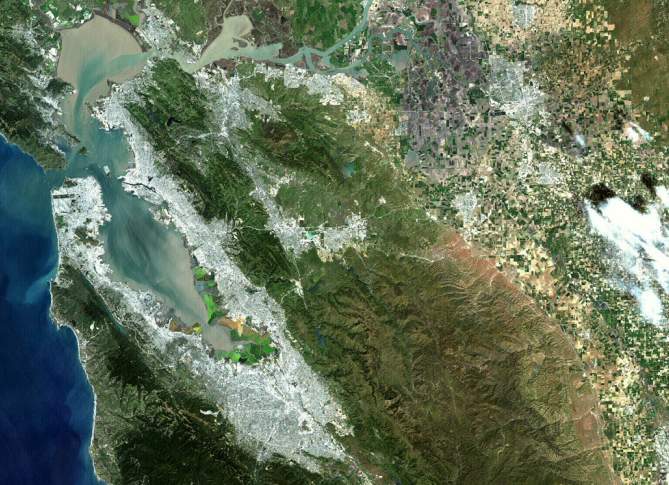
Artist's concept of Mars Global Surveyor. Image credit: NASA/JPL
March 28, 2012 Vol. 5, Issue 3
Fifteen years ago this month, Mars Global Surveyor entered orbit around Mars.
After a twenty-year hiatus, the Mars Global Surveyor space probe became the first successful mission to return to the Red Planet. Designed to recover the objectives of the lost Mars Observer mission lost in August 1993, Mars Global Surveyor launched on a Delta II rocket on November 7, 1996. Its mission objectives were to map the Martian surface using high-resolution imaging, observe weather and climate, study the existence and evolution of its magnetic field, and examine the topography and gravity of Mars. The 2,337-pound spacecraft reached orbit around Mars after traveling nearly 750 million kilometers in 300 days.
In order to produce a Martian map, the spacecraft was equipped with several instruments, including the Mars Orbiter Camera (MOC), which yielded more than 250,000 images over the course of the mission. The most significant development of the mission came 2006, when the spacecraft captured images of two gullies—or water-worn ravines—suggesting that liquid water had carried sediment through them within the past seven years.
Mars Global Surveyor is unique in that it is the longest mission to operate around Mars. The original mission profile planned for the spacecraft to run for two years, depleting its propellant in April 2003. Without propellant, the spacecraft would be unable to steer and point its science instruments accurately with small engine thrusters. However, in 2001, the team came up with a way to minimize the need for the thrusters for stability and balance. Called the “angular momentum management” strategy, the team found that if it reoriented the spacecraft 16 degrees backwards (versus pointing straight down at the surface), it could cut the spacecraft’s use of fuel by 800 percent per day. This enabled the mission to last until November 2, 2006.
Learn more about the Mars Global Surveyor.
Artist’s concept of Mars Global Surveyor.
Featured Photo Credit: NASA/JPL









